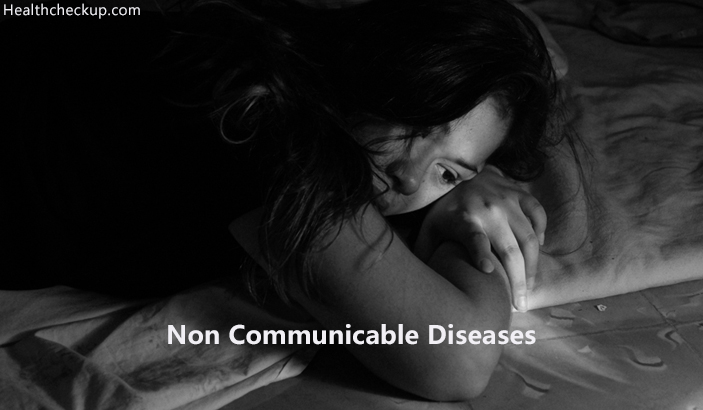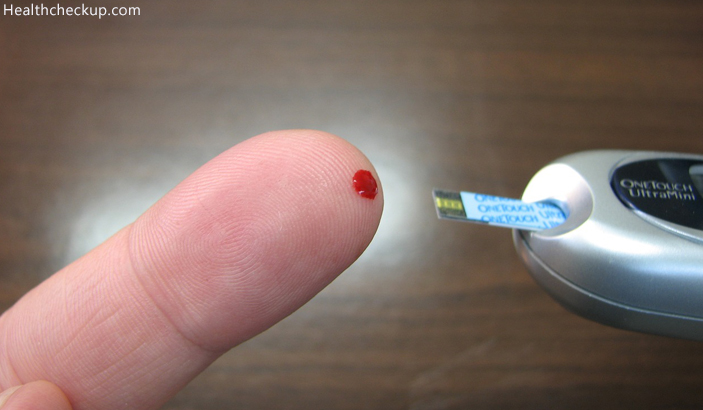NCDs or Non Communicable Diseases are known to most of us as deadly chronic disease and these often last for long duration. These diseases are quite harmful and can occur due to genetic factors, environmental factors, and physiological factors as well. Some of the most common non communicable diseases are heart strokes, cancer, asthma and diabetes. These kinds of disease affect people from the middle and low-income countries where about 32 million deaths occur due to the same.
Non Communicable Disease Definition
A non communicable disease can be termed as a disease or even a medical condition that is not caused due to any infections. These kinds of diseases do last for a very long time and also progress quite slowly. There are also times when the non communicable diseases can cause sudden or rapid deaths like strokes or cancers. Non communicable diseases are also synonymous with the term chronic and these are mostly distinguished by their cause and not their duration. People suffering from non communicable diseases need to opt for “chronic care management as most of these diseases develop slowly and can cause risk to patient’s life.
Non Communicable Disease Symptoms
In most of the cases, the signs or the symptoms of these non communicable diseases are the same. There are cases where there are no signs of any underlying disease and the cause is only known after the sudden death of the patient. There are different diseases under the non communicable diseases and each of them has their own symptoms.
For example, people suffering from cardiovascular diseases will show sudden symptoms like irregular heartbeat, sudden pain in the chest, disturbance in their cardiac cycle and also show signs of fever. Also, cancer will show signs like weakness, baldness or fatigue to name a few. Alzheimer’s disease shows a symptom of memory loss and this mostly occurs in people who are above the age of 60.
Non Communicable Disease Causes
Non-communicable diseases can occur due to various reasons. It can happen due to lifestyle, tobacco and can also occur due to smoking. Alcohol abuse, no physical activity and having poor eating habits can also occur non-communicable diseases.
Non-communicable diseases are also hereditary and thus can be inherited and can be transferred from generation to another. This is one of the situations when treating these diseases becomes a challenging task. In such cases, gene therapy is often recommended. The above-mentioned factors can lead to some of the non-communicable diseases like cancer, heart-related issues, diabetes and other chronic diseases.
Know About the Various Kinds of Non Communicable Diseases
Non Communicable Diseases are also known as NCDs and these are non-transmittable and are not at all infectious. The World Health Organization has stated earlier that NCDs are the main cause of death around the world, causing more than 60% of the deaths in people. These diseases progress very slowly or have chronic symptoms that are mostly not known until the disease has progressed. Let us have a look at the non communicable diseases examples in this article today.
Non Communicable Diseases Examples and Their Definitions
Before we go ahead and learn about the various non communicable diseases, let us first understand the risk factors of them. Some of the common risk factors are the environment, our lifestyle and our genetic background. The age of the person, the gender and his/her exposure to air pollution can also cause these diseases. Some behavioural patterns like no physical activity or following a poor diet can also trigger some symptoms related to the same.
Diabetes: Diabetes is known to be one of the common of all the non communicable diseases. A number of people, irrespective of their age are now days suffering from the same. Diabetes is a condition during which the ability of the body to manually process glucose reduces. There are two types of diabetes – Type 1 and Type 2. Type 1 diabetes is often present from the time of birth and type 2 diabetes is mostly developed with age. Both these cause the build-up of glucose in the bloodstream, which is very risky. People who are overweight are at a higher risk.
Hypertension: Hypertension or high blood pressure as it is commonly called occurs when the blood pressure of the person is high and is over 140/90. Hypertension can be caused due to an existing health condition like diabetes or kidney disease. Lifestyle habits too can cause high blood pressure.
Osteoporosis: Osteoporosis is a condition that can cause a sudden decrease in the bone mass and this makes your bones very brittle and causes damage. Women are often affected by this and presence of other diseases like rheumatoid arthritis can also cause the same.
Alzheimer’s disease: The condition of Alzheimer’s disease is known to cause dementia in people who are older. The symptoms of this condition can be different in different people and they can find it hard to manage their everyday tasks or undergo drastic personality changes.
Heart Disease: Heart diseases often affect the heart or the circulatory system. Heart diseases can include heart failure and attack, congenital heart disease, cardiogenic shock or even rhythm irregularities. If you feel weakness all of a sudden and see a change in your heartbeat rate, it is time you consult a doctor and get a test done for heart diseases.
Fibromyalgia: This disease is considered to be one of the most harmful diseases as it damages the soft tissues in the body. This disease can also lead to sleep disturbance or even cause an irregular heartbeat. Also, the symptoms of this can progress with time and this can in turn cause difficulty in memorizing things or cause constant headaches.
Lung Cancer: Lung cancer is the kind of cancer where the cell growth is seen in the tissues of the lungs. This can occur when the person is highly exposed to various kinds of pollutants and also due to the use of tobacco. It is also said that more than 90% of cases of lung cancer occur in people who smoke regularly. Non-smokers are at a low risk.
Leukaemia: When a person is affected by Leukemia, the body tends to produce more number of blood cells and the malignant cells are then released into the bloodstream. These cells are then carried via the bloodstream through the body and this affects the other tissues as well. This mostly affects men who are over the age of 60 years.
Skin Cancer: Skin cancer occurs when the harmful ultraviolet rays cause damage to the skin cells. This can occur almost anywhere on the skin. People who have a low pigmentation are known to be at a higher risk of the same. Also, it is said that almost 95% of cases of skin cancer are curable.
In most of the cases, skin cancer occurs in the area which is more exposed to the sun rays. Occupational hazards also cause these types of cancer. Like for example, a person who works in a factory that uses harmful radiation or chemicals, there are more chances of him/her getting affected with cancer.
Epilepsy or Seizures: Seizures can occur due to a neurologic malfunction. This can occur due to an “abnormal electric activity” in the brain. While there is no permanent cure to this, regular medication can be taken to reduce the seizure frequency. Seizures can occur in only a few parts of the body and can cause numbness in the affected area. People suffering from brain damage or even tumours can often get affected by epilepsy or seizures.
Other than the above mentioned there are a number of other non communicable diseases that can occur due to genetical problems. A number of times due to hereditary factors, these diseases are passed on from parents to their siblings and will extend along all generation lines. Environmental diseases often occur due to exposure to the harmful environment, bad lifestyle or diet. Some of the non communicable diseases list of such diseases is mentioned below.
Genetic Non Communicable Diseases
- Achondroplasia
- Canavan Disease
- Bipolar Disorder
- Muscular Dystrophy
- Down’s Syndrome
- Sickle Cell Disease
- Wilson’s Disease
- Osteogenesis
- Neurofibromatosis
Environmental Non Communicable Diseases
- Appendicitis
- Asthma
- Emphysema
- Fibromyalgia
- Hyperthyroidism & Hypothyroidism
- Sudden Infant Death Syndrome (SIDS)
- Trick Paralysis
Now that we learnt about non communicable diseases examples, it is time you pay a little more attention to your health and consult a doctor if you see any abnormal symptoms.
Risk Factors of Non-communicable Diseases
There are quite a number of factors that can cause various kinds of non-communicable diseases in both men and women. In many cases, the risk factors of these diseases are sub divided into various categories so that it gets easy for diagnosis and to gain control over the medical condition.
The risk factors of these non-communicable diseases can vary depending upon factors like age, gender and race. Some of the disease like heart attacks are often common when people age.
Some of The Other Risk Factors of Non-communicable Diseases are,
Diet: A healthy diet is of utmost importance and people who often include more of salt, sugar and fats are at a higher risk.

Physical Activity: People who often keep away from physical activities or exercise are also at a risk of non-communicable diseases. The chances increase if you are overweight or obese.
Smoking and Alcohol Abuse: Smoking and alcohol are two habits that can increase your chances of being affected by non-communicable diseases. If you are a chain smoker or are addicted to alcohol, it is time you try to get rid of these habits.
Prevention of Non-communicable Diseases
We all heard of the saying, “prevention is better than cure”, but we seldom follow the same. Though there are amazing resources available to us online that educate about various health issues, we often neglect the facts and end up getting ill. It always helps to reduce the risk factors to remain healthy and to keep the on-communicable diseases at bay. This is also important as the effects of non-communicable diseases exist throughout your life.
You can start by following a proper lifestyle. While most of us lead busy lives, it is important to take some time out to try yoga and meditation as it keeps you away from stress. Also, set a fixed time for your physical activity or exercises every day. You need to follow a very strict routine to prevent the occurrence of any non-communicable diseases.
You also need to make changes to your diet. Include fresh fruits and vegetables and include a whole lot of greens. You also need to prevent yourself from the harmful UV rays of the sun. This way you can prevent cancer and other kinds of skin problems.
Also, if you are obese or are already having a medical condition, it helps to take an advice from a dietician to know which foods you can eat and which you cannot.
Non Communicable Diseases Treatment
People can follow a strict routine and try to avoid the occurrence of non-communicable diseases. The diagnosis and the treatment of these non communicable diseases can depend on the symptoms and the disease you might be affected by. The treatment starts with proper diagnosis and the patient might have to undergo a few tests before the treatment starts.
Like for example, if you are experiencing improper heartbeat and weakness, you might be asked to undergo an ECG and a 2 D echo. This will help to diagnose heart strokes or heart attacks.
Similarly, the non communicable disease cancer is also treated via chemotherapy and other methods. Also, the treatment can depend on the stage of cancer and can include radiation therapy or even medication. Some cancers like breast cancer or basal cell cancer can include creams and regular monitoring.
Now, that you know all about non-communicable diseases and how and why they occur, it is time you take the preventive measures to stay away from these.
Medically Reviewed By

Maanasi specializes in health topics including diet and nutrition. A mother of an untiring seven year old, she enjoys nurturing her love affair with English. She is often found nestled with a book, plopped against a dozen pillows, smiling away at the brink of finishing yet another book of the many dozens, that adorn the shelves of her Mini Library!











